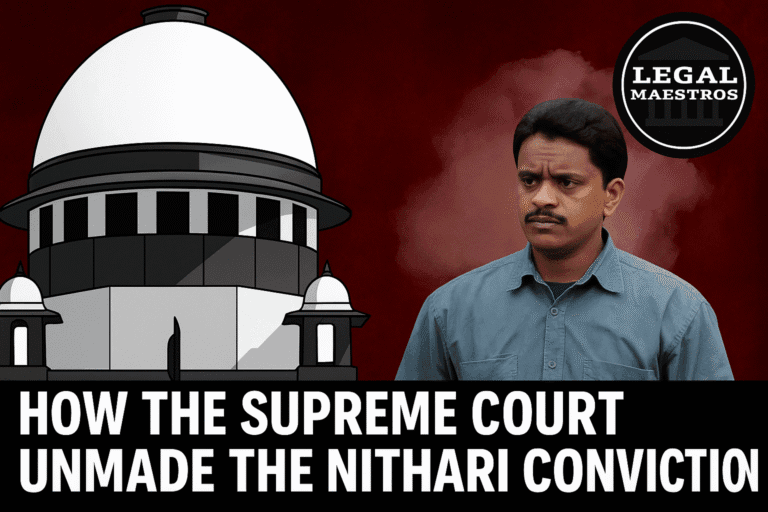
Karnataka High Court Dismisses Kidnapping Case Against Man Accused of Stealing Neighbor’s Cat
A man of Bengaluru named Taha Husain was found not guilty of the criminal accusations that were brought against him by the Karnataka High Court on June 10, 2025. This decision was a shocking one. There were allegations that Husain had unlawfully kept Daisy, the missing cat belonging to his neighbor.
The judge handed out the verdict before the court. In a case that did not have any significant legal foundation, the bench, which was led by Justice M. Nagaprasanna, admonished the police for partaking in what it described to as a “whimsical pursuit” of justice.
The case was dismissed out of court. “The order reaffirmed that the criminal justice system must not be misused for personal grievances or emotional distress arising from non-cognizable events,” the order stated . Additionally, the decree underscored the judiciary’s stance on giving serious violations higher priority than minor arguments over minor differences.
For any queries or to publish an article or post or advertisement on our platform, do call at +91 6377460764 or email us at contact@legalmaestros.com.
Nikitha Anjana Iyer lodged a formal complaint in February 2022, asserting that her cherished feline companion, Daisy, had been taken captive and held in an unreasonable manner within Husain’s premises. One of the first steps in the legal procedure was the filing of this lawsuit. According to the assertions made in the lawsuit, the kidnapping of Daisy caused the complainant to go through “needless stress and emotional trauma.”
For More Updates & Regular Notes Join Our Whats App Group (https://chat.whatsapp.com/DkucckgAEJbCtXwXr2yIt0) and Telegram Group ( https://t.me/legalmaestroeducators )
In addition to that, she listed regulations that penalize the act of intimidating a woman or insulting her modesty, as well as those that apply to the harsh treatment of animals. A First Information Report (FIR) was submitted by the police in accordance with Sections 428 and 429 of the Indian Penal Code, which pertain to offenses involving animals, as well as Sections 504, 506, and 509, which pertain to offensive language and intimidation.
For any queries or to publish an article or post or advertisement on our platform, do call at +91 6377460764 or email us at contact@legalmaestros.com.
After that, the accusations that were brought against the defendant under Sections 428 and 429 were dismissed, but the other counts were kept. As a result of this, Husain decided to file a petition with the High Court in accordance with Section 482 of the Criminal Procedure Code in order to have the proceedings dismissed.
Throughout the course of the investigation, the police relied on security footage that purportedly showed Daisy entering Husain’s apartment. The defense, on the other hand, maintained that the video simply shows the cat freely traveling between apartments that are located close, which is a behavior that is typical of cats that live in multi-unit residences.
In defense of himself, Husain maintained that he had no intention of holding the animal in jail and that he had, in fact, informed the neighbor that he did not own the cat. He also indicated that he had transmitted this information to the neighbor. The charge document includes false charges of abuse and behaviors that offended the complainant’s modesty.
For any queries or to publish an article or post or advertisement on our platform, do call at +91 6377460764 or email us at contact@legalmaestros.com.
This was done in spite of the fact that there was no evidence of improper imprisonment or cruelty. These statements were not included in the first complaint, which raises issues about the integrity of the investigative process and the involvement of the police in a case that has no foundation in reality and are two publications that mention this.
During the course of the hearing, the State Public Prosecutor conceded that the allegation was lacking credibility; nonetheless, he did not totally drop the prosecution and instead left the decision about the case up to the discretion of the courts.
Upon reviewing the complaint and the charge sheet, Justice Nagaprasanna made the observation that the allegations did not fulfill the necessary requirements for the commission of offenses under Sections 504 (deliberate insult causing breach of peace), 506 (criminal intimidation), and 509 (insult to modesty of a woman). This was the conclusion that Justice Nagaprasanna reached after being presented with the evidence.
For any queries or to publish an article or post or advertisement on our platform, do call at +91 6377460764 or email us at contact@legalmaestros.com.
The court made the comment that the mere fact of feeling emotional anguish as a result of the loss of a pet does not establish a legal wrong in line with these statutes. According to and the court came to the conclusion that the allegations could not be sustained since there was no serious threat or disrespectful gesture directed at the person who filed the complaint.
During the delivering of the verdict, the judge made a statement that was sarcastic in tone, adding that the “cat named Daisy has driven everyone crazy.” It was brought to everyone’s notice by this remark that both the police and the person who filed the complaint had allowed their emotional impulses to take precedence over a reasoned legal examination.
Going forward with such a bogus case would cause the criminal justice system to become clogged, it would divert valuable investigation resources away from legitimate grievances, and it would establish a precedent that could potentially lead to instances of legal procedures being misused. These are the points that were brought up by the bench. High Court affirmed the concept that judicial intervention is important to avoid the abuse of process and to protect individuals from charges that are not warranted by dismissing the proceedings. This was accomplished by dismissing the proceedings.
For any queries or to publish an article or post or advertisement on our platform, do call at +91 6377460764 or email us at contact@legalmaestros.com.
Legal experts have voiced their opinion that the judgment serves as a timely reminder for law enforcement agencies to use discretion and analyze whether complaints disclose prima facie violations prior to beginning criminal investigations.
This assertion has been made by legal professionals. In circumstances involving disagreements between occupants of the same home or arguments between neighbors, the case underlines the importance for law enforcement to discern between emotional pain and legally cognizable harm. This is especially important in situations where the disputes took place between neighbors.
The invocation of criminal laws for a transitory incident of a pet rushing over properties cannot merit prosecution, according to observers. This is because there must be apparent cruelty or intent to hurt in order for there to be potential for prosecution. Despite the fact that having compassion for animals is a very admirable quality, this is the case.
For any queries or to publish an article or post or advertisement on our platform, do call at +91 6377460764 or email us at contact@legalmaestros.com.
In addition to this, the ruling brought to light the potential that charge papers may contain accusations that are inflated. Here is a scenario in which investigators may purposefully or mistakenly exaggerate statements in order to fit offenses that do not genuinely correspond to the facts.
This can happen either intentionally or accidently. In addition to the fact that these practices undermine public trust in the police, they also place an unnecessary strain on the judicial system by causing litigation that could have been avoided.
The role of the judiciary in ensuring that investigative agencies continue to adhere to evidentiary standards and legal thresholds prior to the formulation of charges has been brought to light as a result of the High Court’s direct criticism of the police for entertaining the complaint “ostensibly to assuage the feelings” of the complainant. This criticism was brought about as a result of the fact that the High Court had directly criticized the police for entertaining the complaint “ostensibly.
For any queries or to publish an article or post or advertisement on our platform, do call at +91 6377460764 or email us at contact@legalmaestros.com.
In addition to the immediate parties, the verdict may give individuals who are facing allegations that are malicious or without foundation the confidence to seek remedies by submitting petitions to have the petitions dismissed in accordance with Section 482 of the Criminal Procedure Code.
It was made very apparent by the court that Husain had the authority to pursue malicious prosecution actions against the complainant. This acted as a deterrence against the submission of fraudulent police reports (FIRs). There are greater concerns over the weaponization of criminal law to settle personal scores, and this particular portion of the verdict illustrates those concerns. This is a topic that has been brought to the attention of the judicial system in a range of situations, ranging from disagreements over divorce to minor confrontations that occur in the neighborhood.
In the greater context of the judicial system, the Daisy case is consistent with other situations in which the courts have intervened to dismiss prosecutions that lacked substantial legal value. In these circumstances, the courts have declared that the prosecutions were not justified.
For any queries or to publish an article or post or advertisement on our platform, do call at +91 6377460764 or email us at contact@legalmaestros.com.
The necessity that the criminal justice system must continue to concentrate on significant offenses and that the resources of the police should prioritize crimes that damage public safety and welfare is confirmed by this, as it is necessary that the system continue to focus on large offenses.
By rejecting a lawsuit that was spurred by a story about a lost cat, the Karnataka High Court has sent a clear and powerful message. The court has made it quite obvious that not every complaint is deserving of being criminalized, and that the rule of law necessitates a response to conflicts that is both reasonable and appropriate.
In the course of the ruling’s dissemination across the legal community, stakeholders anticipate discussions on the modification of standard operating procedures for the registration of FIRs. When dealing with circumstances that are tinged with human emotions rather than apparent violations of the law, this is of utmost importance.
For any queries or to publish an article or post or advertisement on our platform, do call at +91 6377460764 or email us at contact@legalmaestros.com.
There is now the prospect that training modules for law enforcement officers will place an emphasis on the necessity of judgment in order to discriminate between severe crimes and problems that are not of considerable importance. This verdict assures that justice will continue to be available to the public and will not be obstructed by claims that are not warranted. It also provides citizens with the assurance that the courts are able to act as guardians against the misuse of the legal system.
When everything is said and done, the dismissal of the Daisy case serves as both a lesson to be learned and a precedent to be followed. It is intended to fulfill both of these purposes. It is therefore a demonstration of the necessity of judicial supervision in the prevention of prosecutions that are motivated by opportunistic or erroneous intentions, the preservation of the integrity of criminal law, and the protection of individual liberties.
Due to the fact that dogs have a large emotional impact, the courts have emphasized that legal remedies must be in compliance with fundamental principles and the requirements of the evidence. This is the case even though dogs have a strong emotional impact. It is important to note that the Karnataka High Court’s decision to rule in favor of Taha Husain highlights the difficult balance that exists between emotional compassion and the proper application of the law. Because of this, the pursuit of justice will continue to be conducted in a manner that is both serious and fair.
For any queries or to publish an article or post or advertisement on our platform, do call at +91 6377460764 or email us at contact@legalmaestros.com.






![Research Assistantship @ Sahibnoor Singh Sindhu, [Remote; Stipend of Rs. 7.5k; Dec 2025 & Jan 2026]: Apply by Nov 14, 2025!](https://legalmaestros.com/wp-content/uploads/2025/11/Gemini_Generated_Image_s0k4u6s0k4u6s0k4-768x707.png)
![Karanjawala & Co Hiring Freshers for Legal Counsel [Immediate Joining; Full Time Position in Delhi]: Apply Now!](https://legalmaestros.com/wp-content/uploads/2025/11/Gemini_Generated_Image_52f8mg52f8mg52f8-768x711.png)
1 thought on “Karnataka High Court Dismisses Kidnapping Case Against Man Accused of Stealing Neighbor’s Cat”